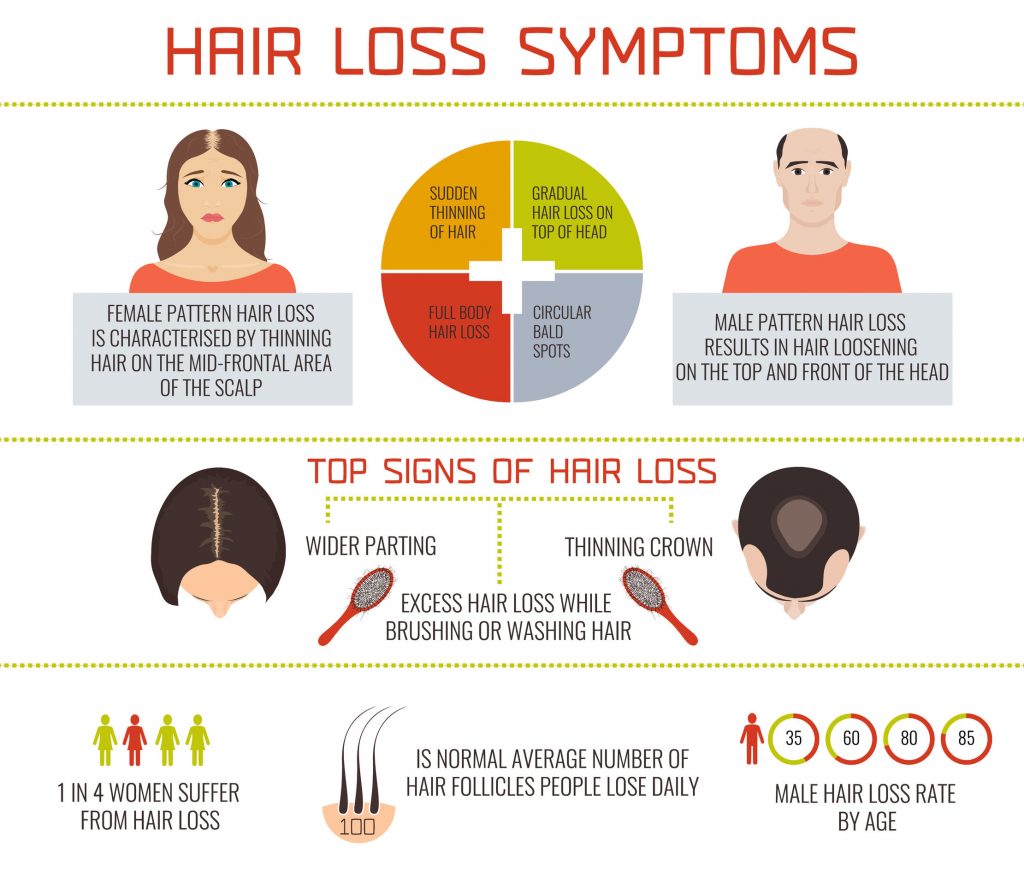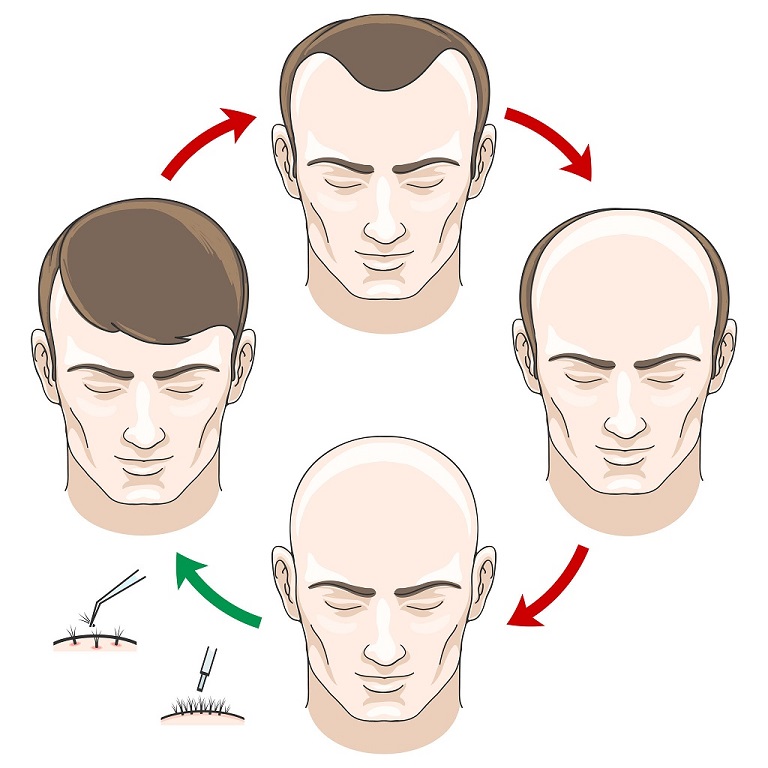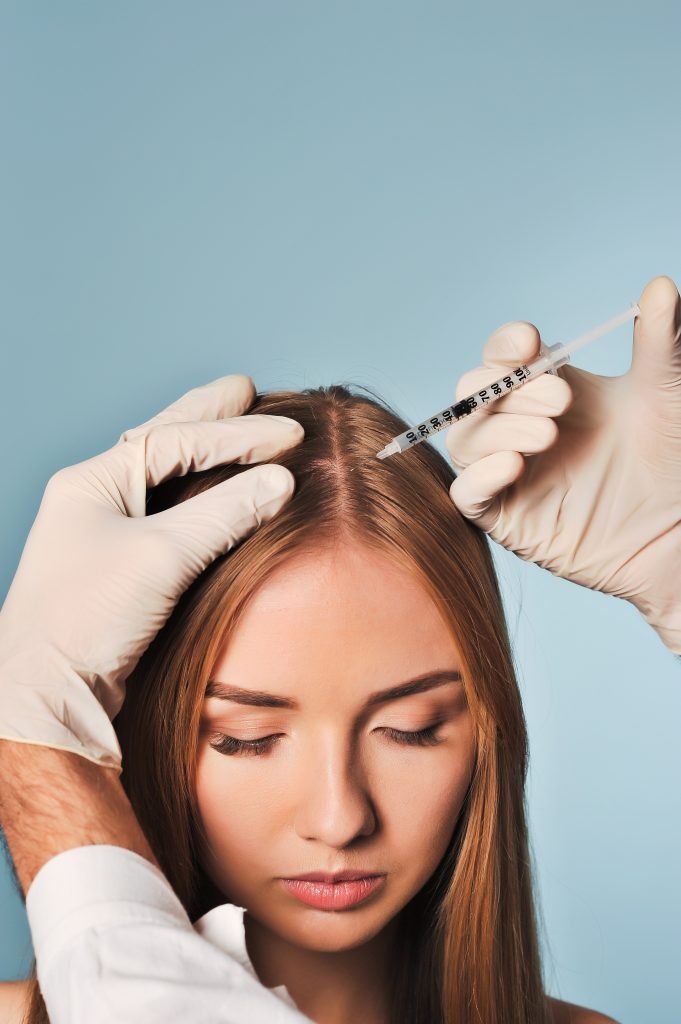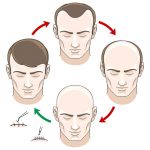Trending in Nonsurgical Hair Restoration – PRP Therapy
Nonsurgical Hair Restoration with PRP is trending for hair loss. Hair clinics all around the country. are offering Platelet Rich Plasma because it can help regrow hair and slow down hair loss in some patients. PRP is derived from the patient’s blood. Platelet Rich Plasma contains important growth factors that can help regrow hair by stimulating weak and even dormant follicles to go back to the growth phase. PRP is injected in the area of hair loss after numbing the scalp. The treatment should be repeated up to three times within one year and each time 4-6 weeks apart.
COMMON HAIR LOSS SYMPTOMS

Watch this video featured on “The Doctors” Nonsurgical Hair Restoration for Hair Loss in Women
So, let us recap what we saw in the video. Nonsurgical Hair Restoration with PRP. Platelets contain granules that contain multiple growth factors. These growth factors can attract stem cells to the area of injection resulting in improving blood flow and rejuvenating the hair follicles. There are at least seven identifiable growth factors in PRP. After numbing the scalp, we use the smallest needle possible in order to deliver an effective treatment with minimal discomfort. PRP is injected into the area of hair loss.
VARIOUS TYPES OF HAIR LOSS – CAN NONSURGICAL HAIR RESTORATION BE THE ANSWER?
What is Traction Alopecia?

Traction Alopecia can happen to anyone that subjects their hair to tight hairstyles (pulling of the follicles) for a prolonged period.
Traction alopecia is a form of gradual hair loss, caused primarily by pulling being applied to the hair. This commonly results from the sufferer frequently wearing their hair in a particularly tight ponytail, braids or weave. Traction Alopecia is a common form of hair loss in African American Women. The constant pulling of tight hairstyles can weaken the hair follicles and sometimes cause permanent damage. Receding Hair Lines are often the result and this condition can now be treated with PRP Injections. Platelet Rich Plasma can stimulate follicles, increase healthy collagen production, and encourage healing. What are some common causes for female hair loss? Read the answers.
What is Traumatic Alopecia?
Traumatic Alopecia is hair loss caused by an injury to the scalp. In the United States, Traumatic Alopecia a particularly common form of hair loss in women. With the latest trends being all about weave and hair extensions, women of all ethnicities are affected by this type of hair loss. Think before you put that tape on your scalp. Hair tape is commonly used for hair pieces and weaves in Caucasian women. This tape is ultimately two-sided and the goal is to not really affect the scalp in the process. However many times that is not the case. glue and foreign substance gets on the scalp and causes damage or bald spots in the area of injury.Though in most cases the hair recovers and grows back, PRP can certainly help with the healing of such hair loss cause.
What is Male Pattern Baldness?
Male pattern baldness, also called androgenic alopecia, is the most common type of hair loss in men. According to the U.S. National Library of Medicine (NLM), more than 50 percent of all men over the age of 50 will be affected by male pattern baldness to some extent.
What is the cause of Male Pattern Baldness?
One cause of male pattern baldness is genetics or having a family history of baldness. Research has found that male pattern baldness is associated with male sex hormones called androgens. Androgens have many functions, including regulating hair growth.Each hair has a growth cycle. With male pattern baldness, this hair growth cycle begins to weaken and the hair follicle shrinks, producing shorter and finer strands of hair. Eventually, the growth cycle for each hair ends and no new hair grows in its place.
Male pattern baldness usually has no side effects. Physicians around the globe use the pattern of hair loss to diagnose male pattern baldness. They may perform a medical history and exam to rule out certain health conditions as the cause, such as fungal conditions of the scalp or nutritional disorders.Health conditions may be a cause of baldness when a rash, redness, pain, peeling of the scalp, hair breakage, patchy hair loss, or an unusual pattern of hair loss accompanies the hair loss.
NONSURGICAL HAIR RESTORATION VIA PRP therapy works better if your hair loss is recent. It is more challenging to “wake up” hair follicles that have been dormant for a long time. Don’t wait until you at the last stage and expect to grow your hair back. A 2017 study from Italy found male patients had increased hair and density in areas where doctors used PRP therapy.It takes about three months to see an improvement. After that time, most people both male and female can regrow their hair by up to 30 to 40 percent of the hair they’ve lost.
Signs of Male Pattern Baldness

If your hair loss begins at the temples or the crown of the head, you may have male pattern baldness. Some men will get a single bald spot. Others experience their hairlines receding to form an “M” shape. In some men, the hair will continue to recede until all or most of the hair is gone. PRP has been used to slow down this process, and in some cases of male pattern baldness, the hair loss was even reversed. Most likely the hair loss will come back at some point but with great hair growth products, PRP Therapy and other nonsurgical methods such as the laser cap you can look forward to keeping your hair a bit longer.
Medications that are commonly used for Hair Loss in men
Minoxidil (Rogaine)
Minoxidil (Rogaine) is a topical medication applied to the scalp. Minoxidil slows hair loss for some men and stimulates the hair follicles to grow new hair. Minoxidil takes four months to one year to produce visible results. Hair loss often happens again when you stop taking the medication.
Finasteride (Propecia, Proscar)
Finasteride (Propecia, Proscar) is an oral medication that slows hair loss in some men. It works by blocking the production of the male hormone responsible for hair loss. Finasteride has a higher success rate than minoxidil. When you stop taking finasteride, your hair loss returns. You must take finasteride for three months to one year before you see results. If no hair growth occurs after one year, your doctor will likely recommend that you stop taking the medication.
CAN NONSURGICAL HAIR RESTORATION BE THE ANSWER TO GENETIC HAIR LOSS?
There’s no known way to prevent male pattern baldness. A theory is that stress may cause hair loss by increasing the production levels of sex hormones in the body. So how do we stay stress-free? We don’t, but we can make a conscious effort to exercise, eat healthier, and treat ourselves to PRP Therapy for Hair Loss.
There’s no known way to prevent male pattern baldness. A theory is that stress may cause hair loss by increasing the production levels of sex hormones in the body. So how do we stay stress-free? We don’t, but we can make a conscious effort to exercise, eat healthier, and treat ourselves to PRP Therapy for Hair Loss.
Can nonsurgical Hair Restoration really counter genetic hair loss such as Male Pattern Baldness? PRP can slow down Hair loss in patients suffering from male pattern baldness. It can be effective as a non-surgical method of hair restoration and can also be combined with FUE Hair Restoration.
Book your complimentary appointent with Dr. Slater today!
Oops! We could not locate your form.









